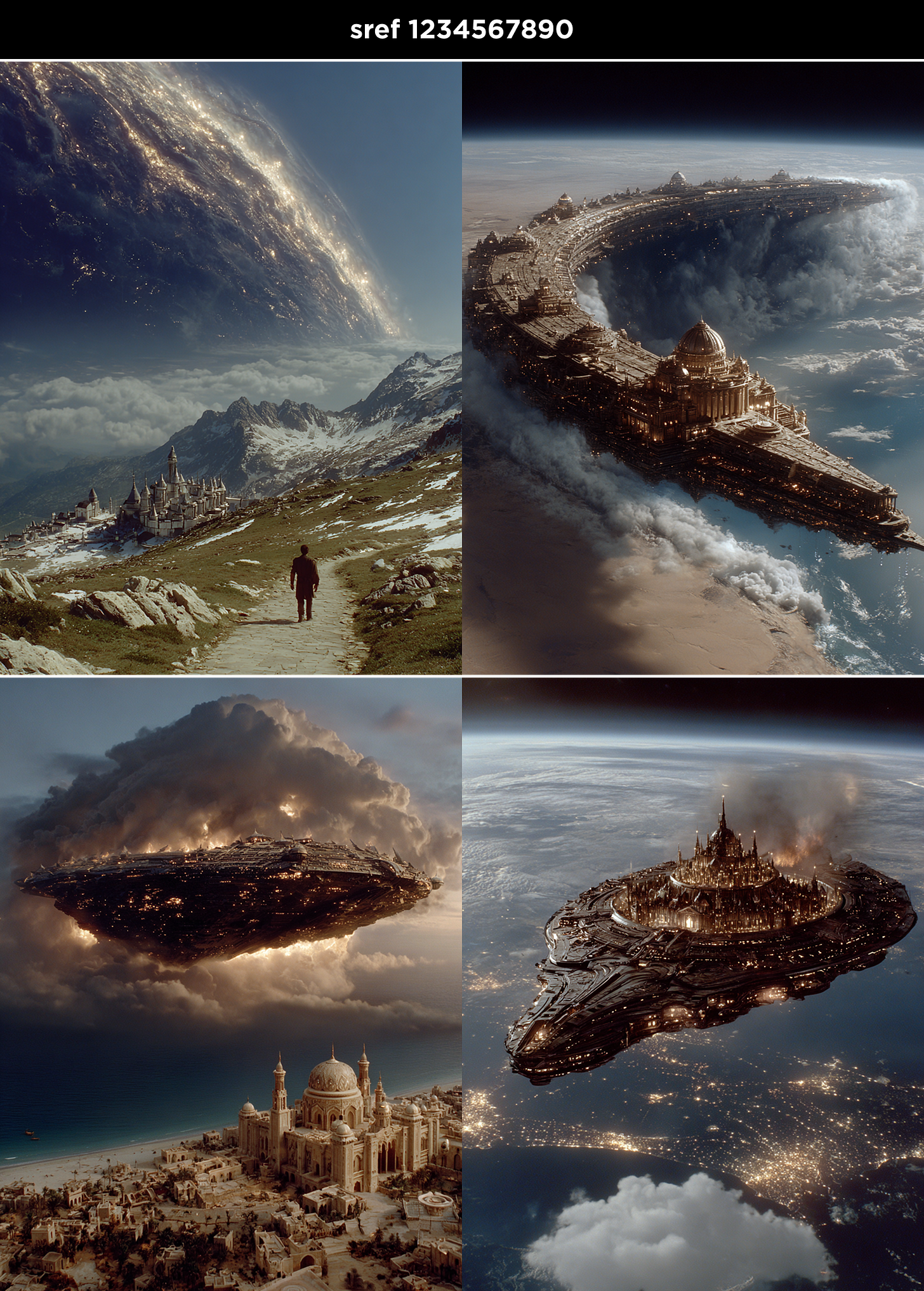Midjourney V7 just upgraded SREFs: Here’s what you need to know
How to keep your visuals consistent while Midjourney quietly rewires its style engine
If you've been using SREF codes in Midjourney to lock down a certain look or aesthetic, you’re going to want to read this: Midjourney just made big changes in V7, and Style References are now smarter, broader, and fully live by default.
But don’t panic, this article breaks down what’s changed, how to use the new system, and how to keep your favorite old codes from misbehaving.
What are Midjourney’s SREF Codes?
SREF stands for Style Reference, a numeric shortcut that tells Midjourney to apply a specific visual style to your prompt. Instead of explaning the whole style each time in the prompt, you just add:
--sref 1234567890And you will get images in this style:
Or, if you’re feeling lucky:
--sref randomMidjourney V7 will replace random with a random style code, giving you a fresh aesthetic to re-use or remix later.
SREF codes are especially useful for:
Branding: Keeping a visual identity consistent across multiple outputs.
Series Work: Creating image sets that feel part of the same universe.
Rapid Experimentation: Swapping aesthetics on the fly without changing the core content.
And, this is raw speculation of mine, you will be able to use them with the coming video feature.
🔁 What’s new in V7?
Here’s a quick overview of how the new SREF system compares to the old one:
Subject leakage in the context of Midjourney's style reference (sref) codes refers to the unintended incorporation of specific subjects, elements, or features from a reference image into the generated output, rather than just applying the intended visual style, such as colors, textures, or composition.
For example, if you use an sref code with a strong fashion style to generate a flower, subject leakage might result in a model appearing in the flower, even though only the style was meant to be transferred.
Yeah. Those things happened.
Yes: V6 codes may not behave the same in V7. If you want your old style codes to work as before, just add --sv 4 to your prompt to tell Midjourney to use the previous version of the style interpreter.
Here how a sref changes depending of the configuration, the first 2 images are somehow related, the third one is totally different:
🛠️ Quick How-To: Using SREF in V7
Here’s the fast-start version:
Want to use an existing image (without a SREF code)?
Drag it into the prompt bar on the web app or write in the prompt the URL like this:
--sref https://yourimage.com/style.jpgWant a surprise style?
Use the following parameter:
--sref randomMidjourney will output a new code you can keep for future prompts.
Want consistency with your sref codes from v6?
Keep using your sref codes across different prompts to maintain visual coherence, adding the following parameters:
--sv 4Want to use a new sref code you discovered for v7?
Add your code without -- sv 4
Note: If you are recycling v7 prompts, remove the —sv 4 parameter. Midjourney used to add it by default whenever you added a sref code.
Finally, there are still 4,294,967,296 sref codes, including sref 0 (shown above).
Here’s why.
Midjourney’s new SREF system is like switching from preset filters to smart style transfer. It's sharper, more flexible, and better at staying on track, even when your prompt goes in a wildly different direction.
So go ahead, start experimenting, remixing, and building your own signature styles.






